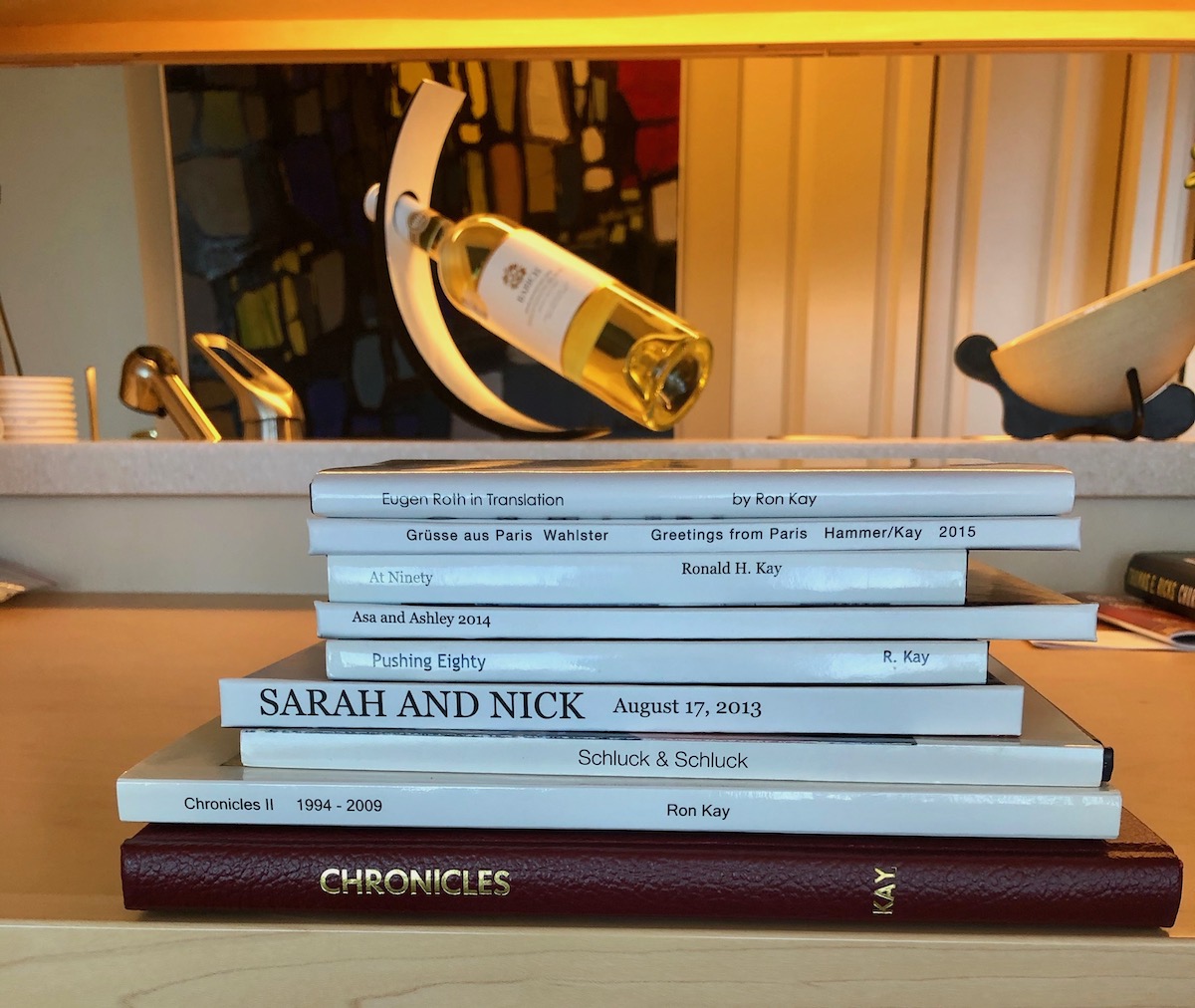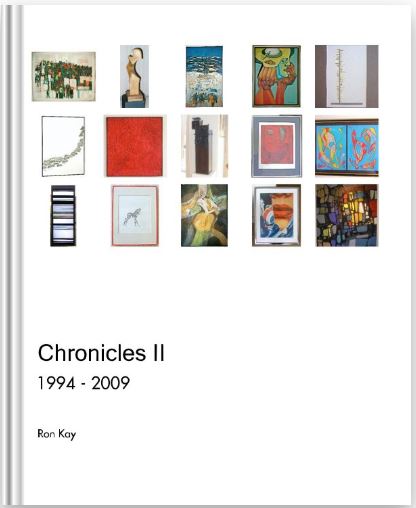San Francisco Explorer Ron explains to the group how he has saved his memoirs and created some other special self-publications.
Listen to the Discussion
About this Explorer Discussion
San Francisco Explorer Ron Kay explains to the group how he saved his memoirs and created some other special self-publications. Noticing that people are interested in how to communicate and leave special memories, he describes writing various memoirs through his recollections of people and places in his life experience. He enjoys writing and reliving memorable life events potentially useful to family and friends.
Ron’s Chronicles Vol. I (nicely formatted and bound typed pages of computer text from 40 years ago) was lately used by a grandson who took a childhood story from the volume and worked it into a play as a university master’s project. Chronicles Vol. II followed. Another example: Ron translated an 80-page book of German poetry into English, and wrote ‘Pushing 80’ as a gift for wife’s 80th birthday.
Members of the group expressed interest, and ask questions:
- How do you save/archive copies of your chronicles?
- At what point in your life did you begin writing Chronicles I?
Others have had various responses from family to the idea of writing a life story or family history:
- Lynn’s niece indicated no interest in the history of the family. “So”, Says Lynn, “This is for me… I have inherited a 93-page set of documents recording all of the property sales and transfers in San Francisco since before the 1906 earthhquake.”
- Diana thinks that in 20 years, the youngsters will be interested and grateful for the documentation. Christmas Holiday letters are another way of archiving.
- Steve has been reviewing his pictures from past years and scanned them. In his youth, he was a photographer for a music industry magazine and has recently had a book of music celebrity photos made at Costco.
- Marilyn has written a narrative life story, but set it aside. Now she is interested in taking it up again, and adding pictures.
- Marty has stored pictures in her computer and in the cloud, and converted sound clips of her mother’s conversations and her husband’s music onto CDs.
Joe wraps up the discussion by describing his experience of recording at the StoryCorps studio. Too, he recorded a memoir of his over 50 years of work experiences, published it, and has read excerpts from it in the San Francisco Public Library.
Explorer Ron Kay sent in this additional “report”:
Self-Publishing My Memories: How & Why
Ever since I retired, book-publishing has been among my most rewarding experiences.
Here are some of the things I have created:
- An annotated pictorial record of a family wedding,
- A memoir of my life before retirement. 150 pages of text, only.
- An illustrated record of the year’s noteworthy events leading to my wife’s 80th birthday;
- A little 28 page book of poems by a friend’s father, which I translated from the German.
- An annotated record of a collection of art, now in the homes of family and friends.
- A record of our 25 most memorable travel destinations.

You can see some of Ron Kay’s finished works in the photo above.
The process of planning, the actual writing and putting together a finished product is only part of what makes the experience so rewarding: the satisfaction of being able to do something for others that only you can do. (The unique piece of clothing you knit for a grandchild).
Anyone who is at ease with writing (more than 144 characters at a time) and at ease with a word processor such as MS WORD, can learn to use one of several programs available to create a professional quality book.
The How.
Today’s publishing technology has removed past obstacles to self-publishing. Cost of entry is essentially zero. You pay only for the ordered, printed copy of the text and images you submit.
I whole heartedly recommend a service called “blurb.com“.
The basis for my recommendation of blurb.com is as follows:
- I have used them for ~10 years, for a variety of projects.
- They have steadily improved their product’s versatility and reliability and the scope of the services they offer.
- They cater to a quality conscious clientele, such as professional photographers.
- They give you a wide range of options on paper quality & binding which determine cost; i.e. you get what you pay for.
- Publishing a book is labor intensive on your part. You want the finished product to do justice to your effort.
- BLURB provides a number of services, which are difficult to match; (see their web site; it also gives you some insight into the wide range of interests which have been served.)
There is one piece of advice missing from the BLURB Website:
For the inexperienced this undertaking is time demanding. Hence you are well advised to have done all the writing before worrying about formatting and placing illustrations in the text.
If you are already familiar with your word processor you remove one level of complexity (1) by doing all the writing and editing on your Word processor beforeyou tackle the job of formatting. I.e. after you are satisfied with your writing you can transfer the completed text to BLURB and thus not let the formatting disrupt your writing.
Most experienced writer/self-publishers follow this routine.
Lack of relevant experience, not lack of interest, has limited my comments to not-for-profit publishing. BLURB does offer some services which address this issue.
(1) The added level of complexity is that your Word processor has to check continuously with the word processing part of the Blurb program. Changing versions of either program will cause glitches which can be very frustrating.
